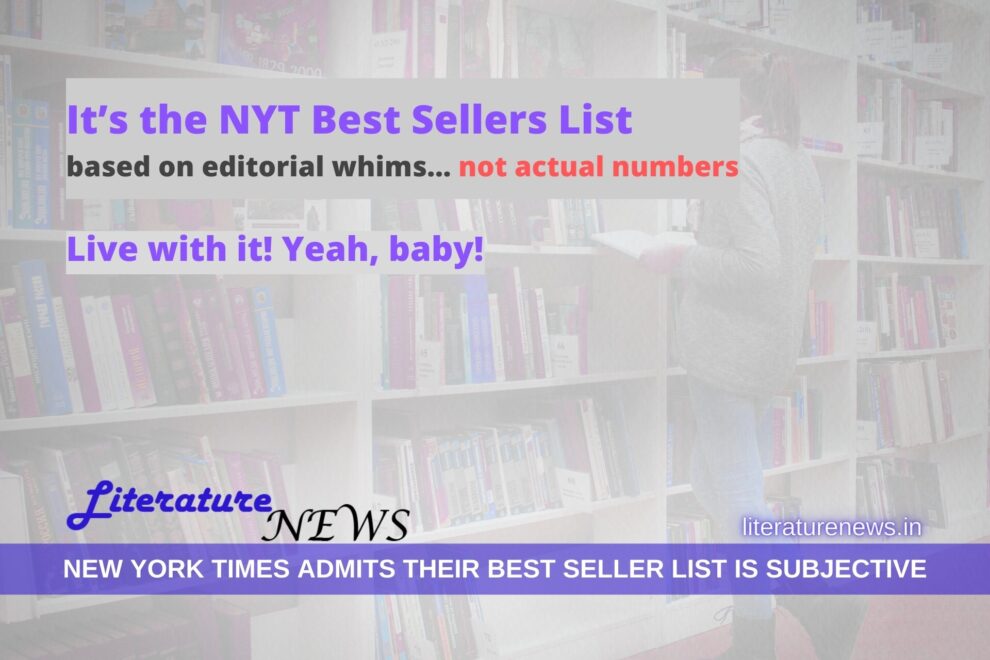When bestseller book lists are curated based on editorial whims rather than objective sales figures, the transparency and reliability of such rankings are compromised, leading to challenges for readers seeking genuine insights into popular literary tastes. In an ideal scenario, bestseller lists serve as valuable tools for readers to discover widely acclaimed books and gauge the preferences of their peers. However, when these lists are influenced by subjective judgments rather than concrete sales data, the distinction between truly popular books and those merely promoted or favoured by a select group of editors becomes blurred.
This phenomenon undermines the credibility of bestseller lists and hampers readers’ ability to make informed decisions about their reading choices. Books that receive prominent placement on these lists due to editorial biases may garner unwarranted attention and overshadow lesser-known titles that may be more deserving of recognition based on their actual sales and reader reception. As a result, readers may miss out on discovering hidden gems that resonate with their interests and preferences.
Now, let’s reveal the moot point of this article. In recent years, the New York Times Bestsellers List has come under scrutiny for its alleged editorial bias and lack of transparency. The controversy has sparked a heated debate within the publishing industry, with some authors and publishers questioning the list’s credibility and relevance. At the heart of the controversy is the claim that the New York Times Bestsellers List is not a true reflection of book sales but rather an editorial product subject to the editors’ preferences and biases. Critics argue that the list does not accurately represent the actual sales figures of their books, suggesting that the list is not a reliable indicator of a book’s popularity or success.
In response to these claims, the New York Times maintains that the list is an editorial product and that they have the right to make decisions about which books to include and which to exclude. They argue that the list is not solely based on sales numbers but also takes into account other factors, such as the quality of the writing and the book’s overall impact.
It’s absolutely ridiculous that the New York Times has the audacity to call their list a “Bestseller List” when it’s clearly nothing more than a biased, subjective, and editorial-driven selection of books. It’s a slap in the face to authors and readers alike, who expect a bestseller list to be based on actual sales numbers and merit, not the whims of a few editors. The fact that the NYT openly admits to considering their list an “editorial product” and claims the right to include or exclude books based on factors like “quality of writing” and “overall impact” is a complete joke. Who are they to decide what constitutes quality or impact? It’s nothing more than an elitist, self-serving attempt to control the narrative and push their own agenda. If the New York Times wants to maintain any credibility, it should stop masquerading its list as a “Bestseller List” and rename it something more accurate, like “NYT Editorial Subjective Choices.” It’s time for them to own up to their biased, subjective, and editorial-driven selection process and stop misleading readers with their so-called “Bestseller List.”
Evidently, the controversy has led to calls for greater transparency in the selection process for the New York Times Bestsellers List. Some authors and publishers have demanded that the New York Times provide more information about the criteria used to select books for the list and the data sources used to compile it.
The debate has also highlighted the role of other bestseller lists, such as those published by Amazon and other retailers. These lists are based on actual sales data and are seen by some as more objective and reliable indicators of a book’s popularity.
In conclusion, the controversy surrounding the New York Times Bestsellers List is an ongoing debate that raises important questions about the role of editorial judgment in the selection of books for bestseller lists and the need for transparency in the selection process. As the debate continues, whether the New York Times will respond to the criticisms and change how it compiles its Bestsellers List remains to be seen.
Manish for Literature News





Add Comment